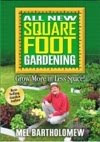For the Apple part, we used apple cider, raw grated apples, and dried apples. That is a lot of apple stuff. And the raw dough tasted pretty apple-y. The baked loaf--not so much. It was not bad. It was just kind of blah. In my opinion it was just not worth the extra work and all the special ingredients.
My dough was pretty wet when I made it, but it firmed up quite a bit in the fridge, in part no doubt due to the dried fruit absorbing some of the liquid. It was still pretty sticky, and I smooshed more than formed it into the pan. I made a whole batch, having gotten the ingredients, and used half of it for this loaf. My pan was a bit small for the loaf. It came out of the pan well, though.


I was going to use a slightly larger loaf pan for the second batch, but then I remembered a long narrow pan I have, and decided to try a Pullman style loaf without the Pullman pan. The Pullman Loaf is made in a long, narrow, lidded pan. The lid makes the top of the loaf flat, if you do it right. The French term for this style of loaf is pain de mie. One theory of the origin of the name, "Pullman," is that the word was derived from a resemblance between the loaf (or its pan) and the Pullman railway car.
I smooshed the dough into the pan (now the pan was too big) and let it rise, just covered with plastic wrap. Then I made a "lid" out of cardboard and wrapped it in foil. (The loaf bakes at 375, the ignition point of paper is 451 (hence the title of the book Fahrenheit 451) so I figured (hoped) I was good. (There is a difference between the flash point of paper, which is 350 and the ignition point. The flash point is the lowest temperature at which it is ignitable by an external burning source. The ignition temperature is the minimum temperature at which the fuel will automatically get ignited in the atmosphere without even an external source of burning.)


I sprayed the lid and the top of the loaf with cooking spray, and weighted the lid with pie weights in mini loaf pans. I baked it for 45 minutes. When I checked it I decided it could use a few more minutes, and since I had removed the lid to check its temperature (speaking of thermometers, do you know how to tell the difference between an oral and a rectal thermometer? The taste.) I finished baking uncovered.
When I put my level on top it was maybe 1/4 of a bubble off (then who of us isn't),
but I thought it worked pretty darned well for a first attempt! (In my experience with such things, it is often best to quit while you are ahead.)


Our second assignment was the Whole Grain Butterfat-and-Yolk-free Brioche. I used pasteurized egg whites and I bumped up the vital gluten since I was using freshly ground white whole wheat flour. The recipe said the dough would be "loose," and it certainly was, but it firmed up some in the fridge.
The dough rose well but I did not get any "oven spring"--the top stayed flat. The bread was pretty good, and 100% whole wheat. It made very good toast.


As you can see, I used my brioche pan, but I still have not figured out the best way to slice it.
And finally, my Blue Bird of Happiness (and his Missus) arrived
though on last Friday they might have wished they had waited a bit.
That is it for this time, check back next time.
























